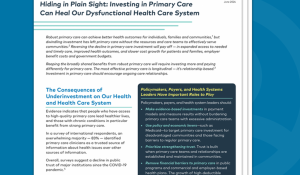You are looking at an archived version of our site. Please visit thepcc.org for a fresh, new experience!
You are here: Array » AAFP Board Takes Tough ...
AAFP Board Takes Tough Stand on Retail Clinics
Armed with a newly minted set of characteristics governing how retail clinics nationwide should approach the provision of health care, the AAFP is set to enter into discussions with any and all such companies about future opportunities to collaborate for the good of patients.
The AAFP Board of Directors has adopted the nine-point list as the first step in a "tough love" approach that reflects the Academy's unwavering stance that patient care suffers when continuity-of-care is not maintained.
Unfortunately, that's often the case when health care is delivered in retail clinics and no follow-up communication with a patient's primary care physician is made.
Retail clinics have a place in the health care marketplace, reasoned AAFP leaders, but only when such clinics
- employ local supervising physicians -- preferably family physicians or other primary care physicians -- as medical directors and ensure that those physicians are committed to developing and using evidence-based care management protocols that improve care quality;
- seek to support the patient-centered medical home and the coordination of care delivered to patients;
- support the patient-physician relationship by always referring patients back to their primary care physicians for ongoing care;
- focus on a defined set of guideline-based episodic care services delivered in coordination with a patient's primary care physician when applicable; care services for chronic medical conditions may be provided in a retail clinic only when care coordination between the clinic and the patient's primary care physician is in place and follows specific guidelines, procedures and protocols agreed to by the physician, the patient and the retail clinic;
- utilize electronic health records to transfer a patient's medical records to his or her primary care physician and to other physicians as appropriate;
- establish protocols that ensure the timely transfer of medical records from the retail clinic to the patient's primary care physician;
- help patients who don't have a primary care physician find one in the community;
- maintain a list of family physicians who are accepting new patients and whose offices are located reasonably close to the retail clinic; and
- establish a specific email address family physicians can use to add their names to a running list of primary care physicians who are accepting new patients.
Recent News
August 16, 2024
August 12, 2024
July 16, 2024
RT @LarryMcNeely1: Here are the details for Making Care Primary program https://t.co/Uzkcipspsh —
2 years 3 months ago
RT @LarryMcNeely1: Critically, the model has 3 tracks, including new investments for practices in tracks 1 and 2! —
2 years 3 months ago
RT @LarryMcNeely1: Primary Care First practices volunteered to report data....but MORE practices need access to a)hybrid payment and better… —
2 years 3 months ago
Secondary menu
Copyright © 2024 Primary Care Collaborative



